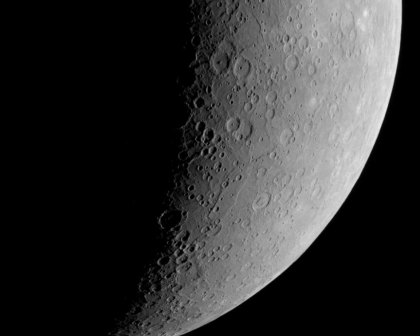How a scientist thought he found 'Vulcan'

We think of Vulcan as the planetary home of the science officer, Mr. Spock, on the Star Trek series. But in the 19th century, scientists thought Vulcan was real. This week marks the anniversary of the announcement -- on Jan. 2, 1860 to members of the Académie des Sciences in Paris -- of a planet that never existed. Here is the story, along with links for further study.
A plausible theory: French astronomer Urbain Le Verrier, born 1811, had been studying the wobble in Mercury’s orbit and speculated about the possibility of an asteroid belt or an unknown planet influencing the orbit.
LeVerrier's reputation: In his time, Le Verrier was much respected and with good reason. In 1845, he was one of two scientists credited with discovering Neptune. He did it by studying the motion of another planet -- Uranus. Le Verrier wanted to know why Uranus didn’t have the orbit that scientists expected, recounts NASA’s website. “Through mathematical calculations, he predicted the presence of another planet beyond Uranus,” the article said. “Le Verrier gave his calculations to astronomer Johann Gottried Galle at the Berlin Observatory. Using Le Verrier's calculations, Galle was able to observe the planet within one hour of starting.” Le Verrier shared honors for the discovery with an Englishman who had made similar calculations, John Couch Adams.
How to explain Mercury: Having success with Neptune, Le Verrier also calculated that the orbit of Mercury was off. And he wrote: “a planet, or if one prefers a group of smaller planets circling in the vicinity of Mercury’s orbit, would be capable of producing the anomalous perturbation felt by the latter planet…According to this hypothesis, the mass sought should exist inside the orbit of Mercury.”
An amateur’s discovery: Le Verrier’s work was read by Edmond Modeste Lescarbault, a physician and amateur astronomer. Lescarbault had constructed a rudimentary observatory “equipped with a refractor, a pocket watch, and a seconds pendulum, as well as a wooden board on which he did his computations,” recounts the Biographical Encyclopedia of Astronomers. On March 26, 1859, Lescarbault said he had observed “an unusual black dot moving across the face of the sun.” He thought this might be a planet.Informed of the work, Le Verrier visited Lescarbault, questioned him about his findings and was convinced. He named the object Vulcan. “Le Verrier had determined Vulcan’s mass and orbital parameters, and even the date of a future transit: 22 March 1877. No one saw it then, or during the solar eclipses in 1860 or 1878,” the encyclopedia recounts.
Le Verrier died Sept. 23, 1877.
The truth comes out: There is no planet/asteroid Vulcan. In 1915, Albert Einstein explained the anomalies in Mercury’s orbit with his theory of relativity.
To know more:
- Biographical Encyclopedia of Astronomers: Edmond Modeste Lescarbault.
- Encyclopedia Britannica: Urbain Le Verrier.
- In Search of Planet Vulcan: The Ghost in Newton's Clockwork Universe, by Richard Baum and William Sheehan (Basic Books; 2003), or Google books.
- NASA: Urbain Le Verrier
- NASA: Uranus.
- PBS.org: NOVA, The Hunt for Vulcan.
- Signature, an online magazine of Penguin Random House: That Time Einstein Debunked Vulcan, a Planet That Never Existed.
- The Hunt for Vulcan: . . . And How Albert Einstein Destroyed a Planet, Discovered Relativity, and Deciphered the Universe, by Thomas Levenson (Random House; 2015).
- Wired magazine: Gentlemen, I give you the planet Vulcan.
Mercury formation dwarfs Grand Canyon
Follow StudyHall.Rocks on Twitter.
If you would like to comment, give us a shout, or like us on Facebook and tell us what you think.

